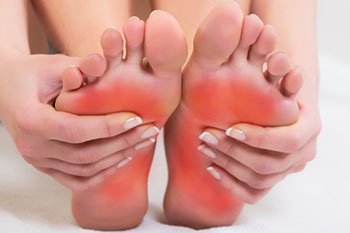What Causes Running Injuries?
More than fifty percent of runners suffer from an injury every year. Every elite runner knows that being sidelined for running injuries, especially heel pain, Achilles tendon pain, and the plantar fasciitis, is disappointing. People think running injuries occur because they increased the distance or intensity, or they did not stretch before and after running among other reasons. Some of these reasons aggravate an already underlying problem.
Most injuries are due to biochemical imbalance which causes the breakdown of the body due to subjective repetitive load causes. Biochemical imbalances cause muscle weakness and other imbalances that cause running injuries include

Muscle Flexibility Imbalances
A tight muscle is a common reason for a running injury. It is very possible to do a few stretches and get back running without pain. Simple, right! No, it’s not because the stretches help you re-align a muscle or tissue and you are back running again. The main question is what was the cause of the tight muscle? First, you need to find out why the muscle is overworking or tightening because stretching is a temporal solution. A tight hamstring may be as a result of weak abdominal muscles or glute muscle. These might be forcing the hamstring to compensate and with a few stretches you do not solve the weak abs or glutes and the problem might recur.
Soft Tissue Imbalances
This is complex, but changes in muscle tension can trigger points of fascia tightness. Muscle tension affects how the body functions, but with regular massage, the muscles relax.
Structural Imbalances
The body is not perfectly symmetrical; that is the right side of the body is not the same as the left side. People who cope well have minor asymmetries of the body depending on the number of differences. Others have severe structural imbalances that need more attention to avoid overstraining causing injuries from time to time.
Muscle Strength Imbalances
For optimal functioning of the body, a balance between the inside and outside, the right and left side, the bottom and top, and the front and back of the body should be maintained. If the muscles of the right leg are weaker the muscles of the left leg will have difficulties. Unfortunately, there is never enough exercise to strengthen your muscles as you would expect. It is important to note that every joint in your body is affected when you work on one muscle. Effective muscle exercises need to be tailored individually for running purposes.
Some common running injuries include
Plantar fasciitis
This is an irritation of the fibrous tissue at the base of the heel due to forced strain on the plantar fascia. One experiences an arch pain or heel pain and the foot hurts with every step making running very difficult. This injury is common with runners who have very low or very high arches because the plantar fascia is forced to stretch. The pain caused by plantar fasciitis can continue for months and even years before completely healing so it should be treated as soon as possible.
Achilles tendon pain
The Achilles tendon is the strongest and thickest tendon connecting the back of the heel and calf muscles. The Achilles tendon injury is the painful inflammation of the tendon. The pain is common in the morning or with activity. Avoid training amidst this injury because the pain will eventually hinder the ability to jog lightly. Runners who have tight, weak calves are vulnerable to this injury.
Choosing the right running shoe is one of the protective ways in which runners can safeguard themselves from injuries. Correct your biomechanics to decrease the probability of injuries.